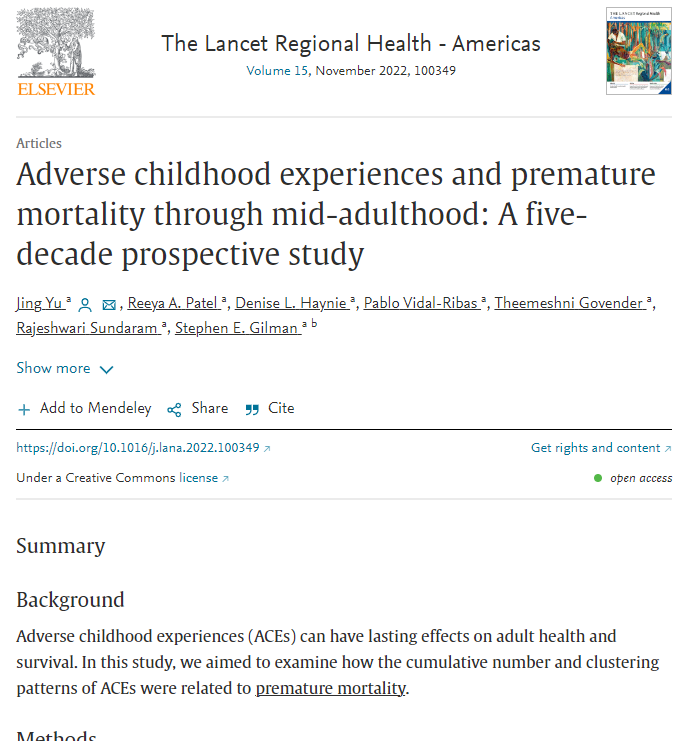\A new study from the National Institute of Child Health and Human Development finds that cumulative count and patterns of Adverse Childhood Experiences (ACEs) predicts premature mortality. The researchers rely on data from a pregnancy cohort study that began in 1959 and was conducted by 12 academic institutions. Each site followed their own recruitment strategy, but the resulting multi-site cohort was demographically similar to the U.S. as a whole and contained data on 52,989 children through age 7. For this paper, the 46,129 participants who had experienced at least one ACE before age 7 were included in the sample and compared with the National Death Index, which collates all states’ death certificates, to identify mortality outcomes. The study finds that each additional ACE experienced before age 7 increases the risk for premature mortality by 10 percent, and that those experiencing four or more ACEs face a 45 percent elevation in risk. The authors also identified five patterns (“clusters”) of ACEs, some of which were especially strong predictors of risk. Specifically, children exposed to the adversities in the two poverty-related clusters— “Poverty and Crowded Housing” and “Poverty and Parental Separation”—had risks of premature mortality 20 to 30 percent higher than children in the “Low Adversity” cluster, even after adjusting for number of ACEs experienced and the demographic makeup of people in each group. The authors suggest that adversities may impact long-term health via different pathways, for instance, with poverty-related experiences operating through physical or cognitive deprivation in key developmental periods, while experiences from the “Family Instability” cluster may introduce unpredictability that distorts perceptions of time and risk over the life course. Because sample members often experienced multiple types of ACEs, the authors conclude, “ultimately, the physiological stress dysregulation likely common to all ACEs compounded by additional psychological and physiological harms of particular clusters of adversities likely converge to produce the profound long-term effects on shorted life span that we observed” (9).

